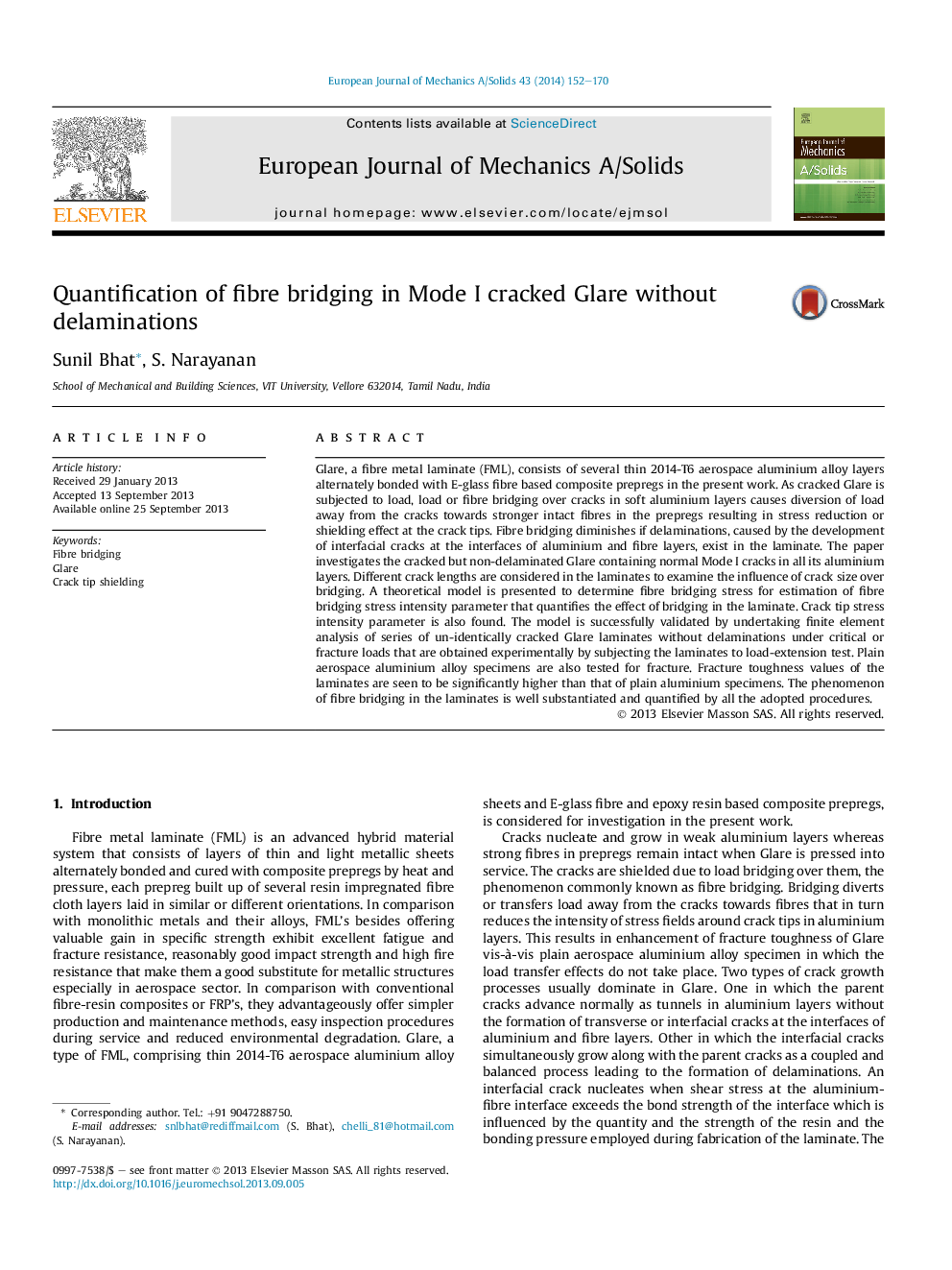| Article ID | Journal | Published Year | Pages | File Type |
|---|---|---|---|---|
| 774714 | European Journal of Mechanics - A/Solids | 2014 | 19 Pages |
•Fibre bridging in a cracked but un-delaminated Glare is modelled.•All three types of analysis viz., theoretical, numerical and experimental are undertaken and validated.•Tensile bridging stress in fibre results in closing stress or shielding in cracked aluminium layer.•Fracture toughness of Glare is found to be higher than that of plain aluminium alloy due to fibre bridging.•Fibre bridging increases with increase in crack length due to the absence of delaminations.
Glare, a fibre metal laminate (FML), consists of several thin 2014-T6 aerospace aluminium alloy layers alternately bonded with E-glass fibre based composite prepregs in the present work. As cracked Glare is subjected to load, load or fibre bridging over cracks in soft aluminium layers causes diversion of load away from the cracks towards stronger intact fibres in the prepregs resulting in stress reduction or shielding effect at the crack tips. Fibre bridging diminishes if delaminations, caused by the development of interfacial cracks at the interfaces of aluminium and fibre layers, exist in the laminate. The paper investigates the cracked but non-delaminated Glare containing normal Mode I cracks in all its aluminium layers. Different crack lengths are considered in the laminates to examine the influence of crack size over bridging. A theoretical model is presented to determine fibre bridging stress for estimation of fibre bridging stress intensity parameter that quantifies the effect of bridging in the laminate. Crack tip stress intensity parameter is also found. The model is successfully validated by undertaking finite element analysis of series of un-identically cracked Glare laminates without delaminations under critical or fracture loads that are obtained experimentally by subjecting the laminates to load-extension test. Plain aerospace aluminium alloy specimens are also tested for fracture. Fracture toughness values of the laminates are seen to be significantly higher than that of plain aluminium specimens. The phenomenon of fibre bridging in the laminates is well substantiated and quantified by all the adopted procedures.
